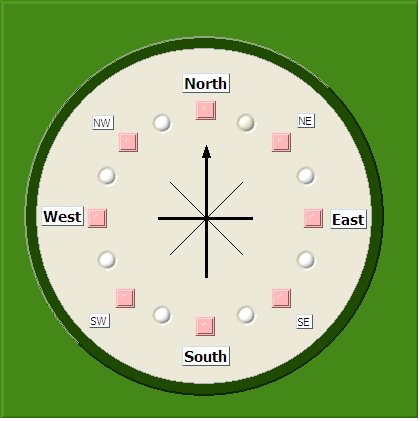Dear guys,
I am trying to make a wind vane using 8 photo interrupters, since I have used I2C ports of microcontroller for other sensor therefore I am using PCF8574 (I2C expander) that will communication with MSP430F2252.
The Idea is to I am trying to read one byte value from the slave. Could you please tell me how I can do this?
How can I interpret in use my idea. Thanks.
Any help would be appreciateable.
North is bit1
North & NE is bit 2
NE is bit 3
NE & East bit 4 and goes on to the end.

I found this code in C example but
//
// MSP430F22x4
// -----------------
// /|\ /|\ /|\| XIN|-
// 10k 10k | | |
// PCF8574 | | --|RST XOUT|-
// --------- | | | |
// --->|P0 SDA|<-|---+---->|P3.1/UCB0SDA |
// --->|P1 | | | |
// --->|P2 | | | |
// --->|P3 SCL|<-+---------|P3.2/UCB0SCL |
// <---|P4 | | |
// <---|P5 | | |
// <---|P6 | | |
// <---|P7 | | |
// +--|A0,A1,A2 | | |
// | | | | |
// \|/
//
// Andreas Dannenberg
// Texas Instruments Inc.
// March 2006
// Built with CCE Version: 3.2.0 and IAR Embedded Workbench Version: 3.41A
//******************************************************************************
#include "msp430x22x4.h"
void main(void)
{
WDTCTL = WDTPW + WDTHOLD; // Stop Watchdog Timer
P3SEL |= 0x06; // Assign I2C pins to USCI_B0
UCB0CTL1 |= UCSWRST; // Enable SW reset
UCB0CTL0 = UCMST+UCMODE_3+UCSYNC; // I2C Master, synchronous mode
UCB0CTL1 = UCSSEL_2+UCSWRST; // Use SMCLK, keep SW reset
UCB0BR0 = 12; // fSCL = SMCLK/12 = ~100kHz
UCB0BR1 = 0;
UCB0I2CSA = 0x20; // Set slave address
UCB0CTL1 &= ~UCSWRST; // Clear SW reset, resume operation
IE2 |= UCB0RXIE; // Enable RX interrupt
TACCTL0 = CCIE; // TACCR0 interrupt enabled
TACTL = TASSEL_2 + MC_2; // SMCLK, contmode
while (1)
{
__bis_SR_register(CPUOFF + GIE); // CPU off, interrupts enabled
UCB0CTL1 &= ~UCTR; // I2C RX
UCB0CTL1 |= UCTXSTT; // I2C start condition
while (UCB0CTL1 & UCTXSTT); // Loop until I2C STT is sent
UCB0CTL1 |= UCTR + UCTXSTT; // I2C TX, start condition
__bis_SR_register(CPUOFF + GIE); // CPU off, interrupts enabled
while (UCB0CTL1 & UCTXSTT); // Loop until I2C STT is sent
UCB0CTL1 |= UCTXSTP; // I2C stop condition after 1st TX
}
}
#pragma vector = TIMERA0_VECTOR
__interrupt void TA0_ISR(void)
{
__bic_SR_register_on_exit(CPUOFF); // Exit LPM0
}
// USCI_B0 Data ISR
#pragma vector = USCIAB0TX_VECTOR
__interrupt void USCIAB0TX_ISR(void)
{
UCB0TXBUF = (UCB0RXBUF << 4) | 0x0f; // Move RX data to TX
__bic_SR_register_on_exit(CPUOFF); // Exit LPM0
}

